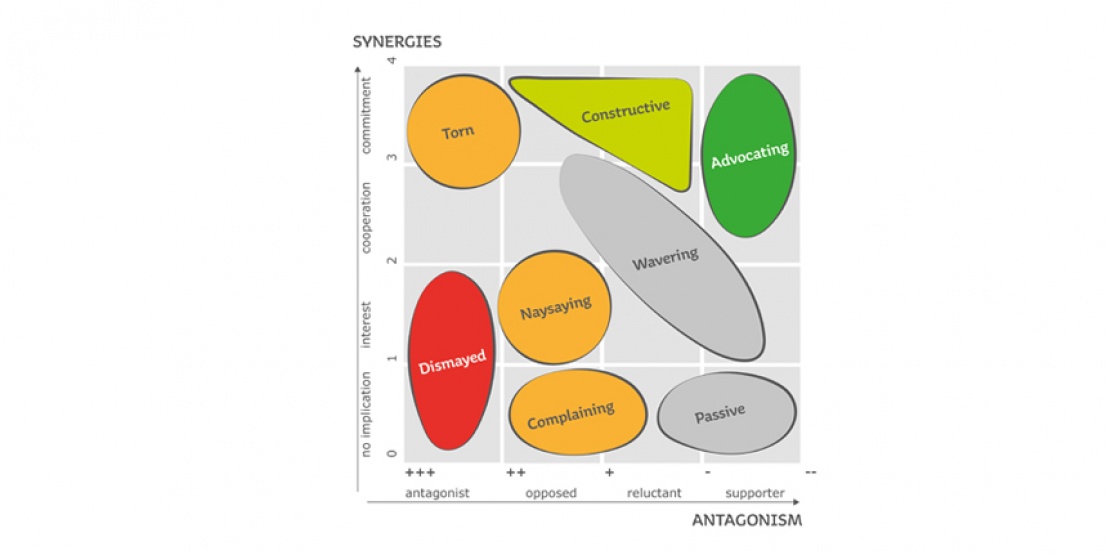Indirect procurement managers are often faced with a dilemma. Senior management and the procurement division ask them to implement cost control plans, streamline the portfolio of suppliers and roll out shared procurement methods, despite the fact that the buyers at the company's different sites (factory, logistics centre, regional management, and so on) do not report to them directly. They often come up against strong local resistance, with some buyers believing that a shared approach will strip away some of their authority, while others understand and buy into the reasoning behind the strategy.
To successfully perform their duties, indirect procurement managers and their teams must strike a subtle balance between coordination, obligation and influence. To help them with this challenge, the allies strategy can prove to be an invaluable asset!
The same categories of stakeholders with all transformation projects
The allies strategy is based on a principle, namely that in every transformation project, the stakeholders affected can be divided into three different groups.
- "Promoters": those who see the change as a positive idea and who want the change to happen. They represent 20% of the stakeholders.
- "Neutrals": they hesitate, sit on the fence and wait to see what is going to happen. They represent 60% of the stakeholders.
- "Opponents": they are fundamentally against the change. They oppose the change because they have too much to lose. They represent 20% of the stakeholders.
The whole challenge of successfully implementing the change is converting the "neutrals" into "promoters" so that the majority are in favour of the transformation, which will then happen.
Reinforcing the "promoters" to convince undecided stakeholders
The people leading the transformation process are often tempted to spend far too much time convincing the "opponents". The members of this group often make the most noise and voice their dissatisfaction with a certain effect on the other stakeholders. Transformation leaders believe that if they can convince them, the others will follow suit. But in most cases, it is a waste of time and effort, because their reasons for opposing change are deep-rooted and even irrational. The most alarming side effect of spending time on the "opponents" is weakening the group of "promoters" and alienating "neutrals".
The wisest course of action is to take the opposite approach. It is much more effective spending time with the "promoters", empowering them and giving them responsibilities in the project. Strengthening the group of "promoters" will attract the "neutrals" and isolate the "opponents", while creating a majority of people in favour of the transformation.
Identifying "promoters" in the subsidiaries
When deploying an enterprise-wide indirect procurement strategy, applying this method requires the lead team to:
- Map the different stakeholders by clearly identifying the "allies" and "opponents" to ensure that as much time as possible is spent with the first group.
- Carry out projects with them by focusing on quick wins that will highlight the actual benefits of the shared procurement approach.
- Actively communicate about the successes by bringing the "promoters" into the team meetings, disseminating the results obtained (through newsletters, the intranet, etc.), organising visits to the pilot sites, promoting the allies among senior management, and so on.
Faced with the results and seeing the allies promoted, the "neutrals" will gradually follow suit. The "opponents" will have no other choice than to play along, and the shared procurement policy will become a reality.









